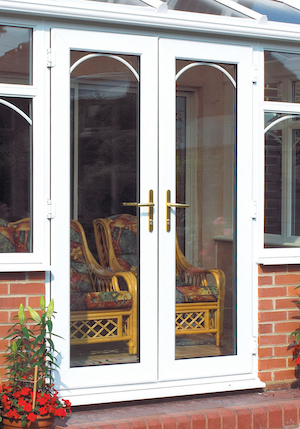What's The Current Job Market For French Door Seal Replacement Profess…
페이지 정보

본문
french door glass repair near me door seal replacement upvc french doors (sneak a peek at this site)
 French door seals can help to regulate the air flow in your home and saves money on energy costs. This simple DIY project can be completed within an hour.
French door seals can help to regulate the air flow in your home and saves money on energy costs. This simple DIY project can be completed within an hour.
Tubular and V-strip seals function as air barriers, usually installed in milled grooves at the base of a door or window sash, or between a frame and a door. These seals are generally self-sticking, and require less time to put in.
Selecting the Best Weatherstrip Seal
Over time, natural wear and tear, as well as everyday use can cause the seals around your doors to weaken. This allows air from outside to escape, resulting in higher heating and cooling costs and a decrease in indoor comfort. Weather stripping can help keep snow, rain and outside noise from coming in and prevents expensive leakage of heated or cool indoor air.
There are many different types of weather stripping available. Certain types of weather stripping are more durable while others are more straightforward to install. The type of weatherstripping you select will depend on your specific needs.
Felt weatherstrip is the most popular and inexpensive alternative. It is usually affixed to the jamb or nailed in place. When the door is closed it compresses the felt, creating the appearance of a seal. It is recommended to use felt in dry conditions, as it isn't well-suited to moisture.
Foam tapes are composed of closed-cell or open-cell foam. They are backed with sticky backing. It is available in a variety of widths and thickenings making it ideal for filling in small gaps. It can be cut to size and then positioned along the top or inside corners of the window frame.
The weatherstrip made of rubber is a more durable option that is similar to foam tape. It is easily installed and can be attached to the frame or door jamb using adhesive. It comes in a range of widths, and can also be cut to fit larger gaps.
Door sweeps are flat pieces made of plastic, stainless steel or aluminum with an appearance similar to a brush seal. They can be used to stop drafts and snow accumulation at the bottom of the door, or at its hinge.
Push-on seals, often referred to as "C-clip" seals are designed to be pushed onto the lip and feature the core of a metal that is completely covered in rubber to prevent corrosion. They are designed to reduce drafts, stop leaks and make closing and opening doors much easier.
The unique vehicle model, make and year are generally used to determine the car's weatherstripping. This is both convenient as well as inconvenient, as you may be unable to locate the exact weatherstripping that is required for your car, as it can often be sold out.
Remove the old weatherstrip
A damaged or missing part of weatherstrip can cause air infiltration, energy loss and the ingress of pests. While some minor tears and damage can be repaired with sealants or patches but a full repair is usually needed for more serious damage. The door weatherstrip is a vital home maintenance item. It can increase your home's comfort energy efficiency, comfort, and value.
If your current weatherstrip is composed of vinyl, rubber or metal, it's essential to remove it with care before beginning the process of installing it. This will ensure that the new weatherstrip sticks to the door frame properly and does not leave gaps which can let drafts or moisture get in.
Start by taking out any screws or nails that are holding the old weatherstrip to the door frame. Then remove it from both sides. Clean the area thoroughly to ensure that there isn't any residue that will interfere with the seal's bond to the doorframe. Take into consideration how you'll get rid of the old seal. Certain regions have regulations on its disposal.
Once the old weatherstrip is removed and you are able to evaluate the new material. Make sure that you have precise measurements. Even a few inches can result in an unfitting weatherstrip seal. Measure with a tape measure and be sure to "measure twice and cut once".
Close your doors and windows to ensure there are no gaps before you purchase any new weatherstrip. Also, ensure that the hinges are properly secured, as an unbalanced door could lead to gaps between the weatherstrip and door frame.
Once you've got the correct measurements and have tested the new weatherstrip, it's time to purchase and prepare your materials. The manufacturer's instructions will tell you how to cut the weatherstrip. Some vinyl and rubber weatherstrips can be cut using shears or utility knives while metal ones are best cut with Tinsnips.
Cutting the New Weatherstrip
A properly functioning door weatherstrip seal is able to help regulate indoor temperatures, minimize drafts and improve comfort and energy efficiency. This crucial home improvement may become damaged or worn out over time through constant use. Regular inspections and maintenance are advised to keep your doors in good working order.
The right type of weather stripping is crucial regardless of whether you're replacing french doors with windows an old one or adding it to a door frame that's not well-insulated. There are a variety of weatherstripping on the market, each with their own pros and cons. Foam tape, for example, is a common option that is easy to cut and install. It is available in various widths and is made of open-cell foam, EPDM rubber or both. Foam seals can also be used to seal the top and bottom of window frames. They can be cut to size.
The pile weatherstripping is made of the polypyrene base, which is a plastic material that has hairs that are thin. It is designed to slide into a small channel that is located on the hinge stile and lock stile stile of your door. To stop it from slipping out, the installer generally attaches this kind of weather stripping in place with a screw driver and hammer. However, over time, the stakes can come loose or be removed entirely, leaving the weather stripping to slide out from under your door.
To avoid this from happening, when buying a new weatherstrip for your pile, make certain to select the appropriate base width, and think about using adhesive-backed options. This will save you the hassle of having to stake it in place and ensure that the new weatherstrip is secure.
Before you begin the work, make sure that the area around the door frame is free of dirt and residues from the old weather stripping. This will ensure that your new seal will create a strong barrier against drafts and has a strong connection to the door frame. Also, take precise measurements of the groove in which the old weatherstrip was located and this will ensure that your new seal is properly fitted.
Installing the Weatherstrip
A properly functioning door weather strip seal is an airtight barrier to air and moisture. This shields your walls, doors, frames, and other components from damage. It also stops drafts, which can help save energy and drastically reduce heating and cooling costs. It's a fairly simple DIY project to replace damaged or worn-out weather strip. It's worthwhile if you wish to minimize energy loss and improve your indoor comfort.
First, clean the area where you'll install your new weatherstrip. Use a towel or brush to clean any dirt, dust, or other residue on the frame which could impede the bond between the adhesive and the new stripping.
Once the area has been cleaned, you can choose what type of weatherstripping you require. There are a myriad of options to choose from, ranging from simple and affordable self-adhesive foam tape to tough and durable rubber gasket weather strips. Some are inserted in grooves milled in the bottom of windows or doors, while others, like tubular Vinyl reinforced with silicone are attached to wooden or metal strips that can be screwed or nailed into the desired location.
Select a material that is the best fit for your requirements and installation requirements, considering durability, longevity and ease of use. Adhesive-backed weather stripping for metal requires a bit more experience and knowledge than other types.
Once you have chosen the type of product, be sure to take a measurement and cut it at the proper length. Remember the old saying, "Measure once, cut twice." This will ensure that the new weather stripping fits in the groove correctly and is of the right dimension.
Before you put in your weatherstrip, test it by closing the door and looking for a secure, tight seal. If the door is difficult to close or there gaps in the seal, the weather stripping could be too thick. The measurements could have been wrong. If this is the case, just cut it down to the right size or reapply it to achieve a better fit.
When you've finished the job, you must wait 24 hours before shutting the trunk lid or opening the door. Shutting them while the adhesive is still wet may cause the weatherstrip to slide off of the newly glued surface, allowing water and other unwanted elements into your home.
 French door seals can help to regulate the air flow in your home and saves money on energy costs. This simple DIY project can be completed within an hour.
French door seals can help to regulate the air flow in your home and saves money on energy costs. This simple DIY project can be completed within an hour.Tubular and V-strip seals function as air barriers, usually installed in milled grooves at the base of a door or window sash, or between a frame and a door. These seals are generally self-sticking, and require less time to put in.
Selecting the Best Weatherstrip Seal
Over time, natural wear and tear, as well as everyday use can cause the seals around your doors to weaken. This allows air from outside to escape, resulting in higher heating and cooling costs and a decrease in indoor comfort. Weather stripping can help keep snow, rain and outside noise from coming in and prevents expensive leakage of heated or cool indoor air.
There are many different types of weather stripping available. Certain types of weather stripping are more durable while others are more straightforward to install. The type of weatherstripping you select will depend on your specific needs.
Felt weatherstrip is the most popular and inexpensive alternative. It is usually affixed to the jamb or nailed in place. When the door is closed it compresses the felt, creating the appearance of a seal. It is recommended to use felt in dry conditions, as it isn't well-suited to moisture.
Foam tapes are composed of closed-cell or open-cell foam. They are backed with sticky backing. It is available in a variety of widths and thickenings making it ideal for filling in small gaps. It can be cut to size and then positioned along the top or inside corners of the window frame.
The weatherstrip made of rubber is a more durable option that is similar to foam tape. It is easily installed and can be attached to the frame or door jamb using adhesive. It comes in a range of widths, and can also be cut to fit larger gaps.
Door sweeps are flat pieces made of plastic, stainless steel or aluminum with an appearance similar to a brush seal. They can be used to stop drafts and snow accumulation at the bottom of the door, or at its hinge.
Push-on seals, often referred to as "C-clip" seals are designed to be pushed onto the lip and feature the core of a metal that is completely covered in rubber to prevent corrosion. They are designed to reduce drafts, stop leaks and make closing and opening doors much easier.
The unique vehicle model, make and year are generally used to determine the car's weatherstripping. This is both convenient as well as inconvenient, as you may be unable to locate the exact weatherstripping that is required for your car, as it can often be sold out.
Remove the old weatherstrip
A damaged or missing part of weatherstrip can cause air infiltration, energy loss and the ingress of pests. While some minor tears and damage can be repaired with sealants or patches but a full repair is usually needed for more serious damage. The door weatherstrip is a vital home maintenance item. It can increase your home's comfort energy efficiency, comfort, and value.
If your current weatherstrip is composed of vinyl, rubber or metal, it's essential to remove it with care before beginning the process of installing it. This will ensure that the new weatherstrip sticks to the door frame properly and does not leave gaps which can let drafts or moisture get in.
Start by taking out any screws or nails that are holding the old weatherstrip to the door frame. Then remove it from both sides. Clean the area thoroughly to ensure that there isn't any residue that will interfere with the seal's bond to the doorframe. Take into consideration how you'll get rid of the old seal. Certain regions have regulations on its disposal.
Once the old weatherstrip is removed and you are able to evaluate the new material. Make sure that you have precise measurements. Even a few inches can result in an unfitting weatherstrip seal. Measure with a tape measure and be sure to "measure twice and cut once".
Close your doors and windows to ensure there are no gaps before you purchase any new weatherstrip. Also, ensure that the hinges are properly secured, as an unbalanced door could lead to gaps between the weatherstrip and door frame.
Once you've got the correct measurements and have tested the new weatherstrip, it's time to purchase and prepare your materials. The manufacturer's instructions will tell you how to cut the weatherstrip. Some vinyl and rubber weatherstrips can be cut using shears or utility knives while metal ones are best cut with Tinsnips.
Cutting the New Weatherstrip
A properly functioning door weatherstrip seal is able to help regulate indoor temperatures, minimize drafts and improve comfort and energy efficiency. This crucial home improvement may become damaged or worn out over time through constant use. Regular inspections and maintenance are advised to keep your doors in good working order.
The right type of weather stripping is crucial regardless of whether you're replacing french doors with windows an old one or adding it to a door frame that's not well-insulated. There are a variety of weatherstripping on the market, each with their own pros and cons. Foam tape, for example, is a common option that is easy to cut and install. It is available in various widths and is made of open-cell foam, EPDM rubber or both. Foam seals can also be used to seal the top and bottom of window frames. They can be cut to size.
The pile weatherstripping is made of the polypyrene base, which is a plastic material that has hairs that are thin. It is designed to slide into a small channel that is located on the hinge stile and lock stile stile of your door. To stop it from slipping out, the installer generally attaches this kind of weather stripping in place with a screw driver and hammer. However, over time, the stakes can come loose or be removed entirely, leaving the weather stripping to slide out from under your door.
To avoid this from happening, when buying a new weatherstrip for your pile, make certain to select the appropriate base width, and think about using adhesive-backed options. This will save you the hassle of having to stake it in place and ensure that the new weatherstrip is secure.
Before you begin the work, make sure that the area around the door frame is free of dirt and residues from the old weather stripping. This will ensure that your new seal will create a strong barrier against drafts and has a strong connection to the door frame. Also, take precise measurements of the groove in which the old weatherstrip was located and this will ensure that your new seal is properly fitted.
Installing the Weatherstrip
A properly functioning door weather strip seal is an airtight barrier to air and moisture. This shields your walls, doors, frames, and other components from damage. It also stops drafts, which can help save energy and drastically reduce heating and cooling costs. It's a fairly simple DIY project to replace damaged or worn-out weather strip. It's worthwhile if you wish to minimize energy loss and improve your indoor comfort.
First, clean the area where you'll install your new weatherstrip. Use a towel or brush to clean any dirt, dust, or other residue on the frame which could impede the bond between the adhesive and the new stripping.
Once the area has been cleaned, you can choose what type of weatherstripping you require. There are a myriad of options to choose from, ranging from simple and affordable self-adhesive foam tape to tough and durable rubber gasket weather strips. Some are inserted in grooves milled in the bottom of windows or doors, while others, like tubular Vinyl reinforced with silicone are attached to wooden or metal strips that can be screwed or nailed into the desired location.
Select a material that is the best fit for your requirements and installation requirements, considering durability, longevity and ease of use. Adhesive-backed weather stripping for metal requires a bit more experience and knowledge than other types.
Once you have chosen the type of product, be sure to take a measurement and cut it at the proper length. Remember the old saying, "Measure once, cut twice." This will ensure that the new weather stripping fits in the groove correctly and is of the right dimension.
Before you put in your weatherstrip, test it by closing the door and looking for a secure, tight seal. If the door is difficult to close or there gaps in the seal, the weather stripping could be too thick. The measurements could have been wrong. If this is the case, just cut it down to the right size or reapply it to achieve a better fit.
When you've finished the job, you must wait 24 hours before shutting the trunk lid or opening the door. Shutting them while the adhesive is still wet may cause the weatherstrip to slide off of the newly glued surface, allowing water and other unwanted elements into your home.
- 이전글Five Killer Quora Answers To Bifold Door Seal Repair 24.12.18
- 다음글See What Mercedes Key Fob Replacement Tricks The Celebs Are Making Use Of 24.12.18
댓글목록
등록된 댓글이 없습니다.

















